Back to blog
The Complete Hiking Essentials Checklist for Beginners and Pros
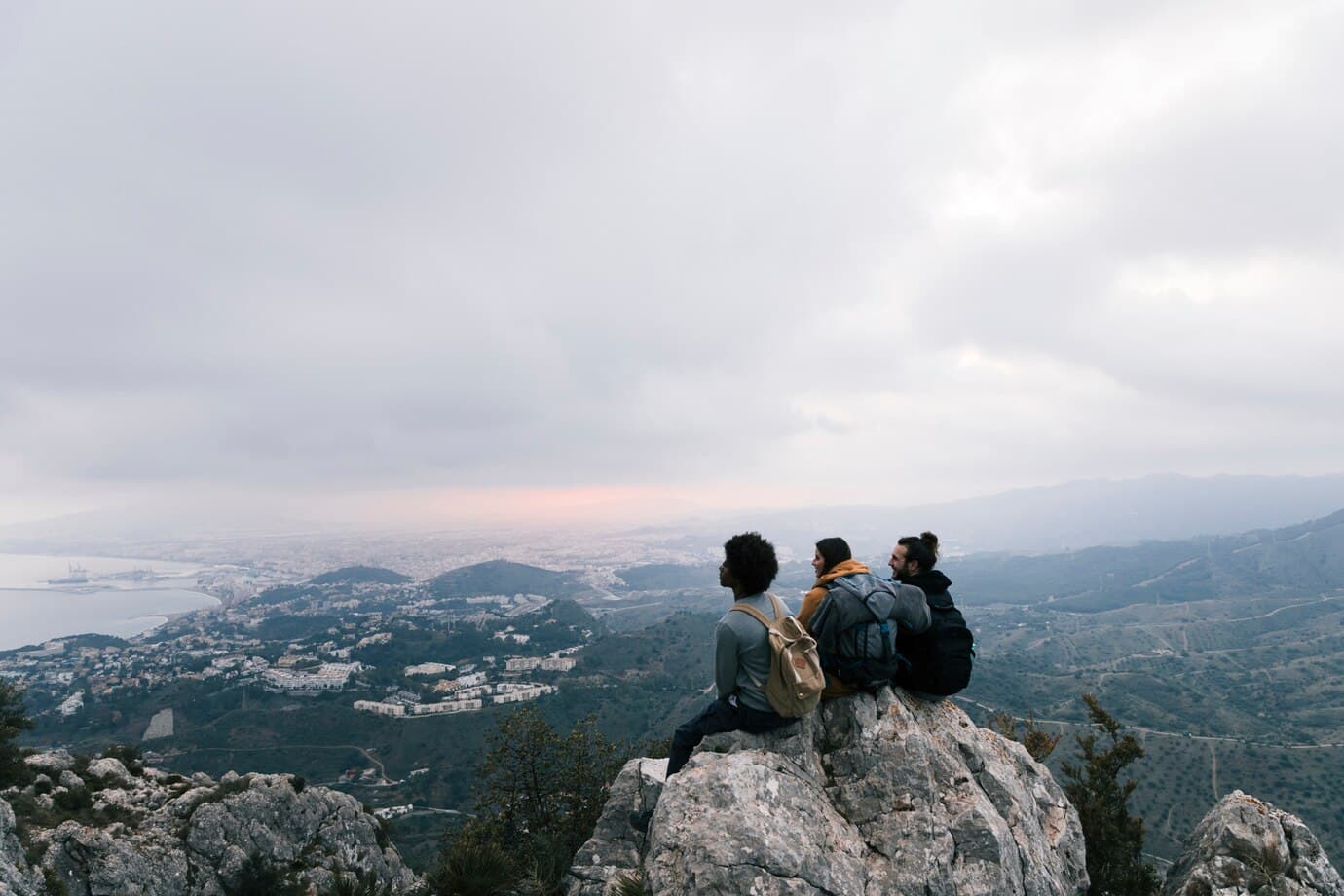
Hiking Essentials Checklist
Hiking Benefits for Mental Health
Daily Tips for Incorporating Hiking into Your Life
Healthy Hiking Meals
Hiking Benefits for Mental Health
Daily Tips for Incorporating Hiking into Your Life
Healthy Hiking Meals
Going on a hiking adventure, whether a short day hike or a multi-day trek, is an incredible way to enjoy nature, stay active, and create unforgettable memories. Proper preparation is important, whether you're hiking solo or with a group.
This guide covers everything you need to know, from choosing the right gear and food to staying safe and handling emergencies. If you're new to hiking, you'll find tips to help you build confidence and make the experience both exciting and rewarding. Plus, you'll discover how hiking can improve your mental and physical well-being.
Hiking Essentials Checklist
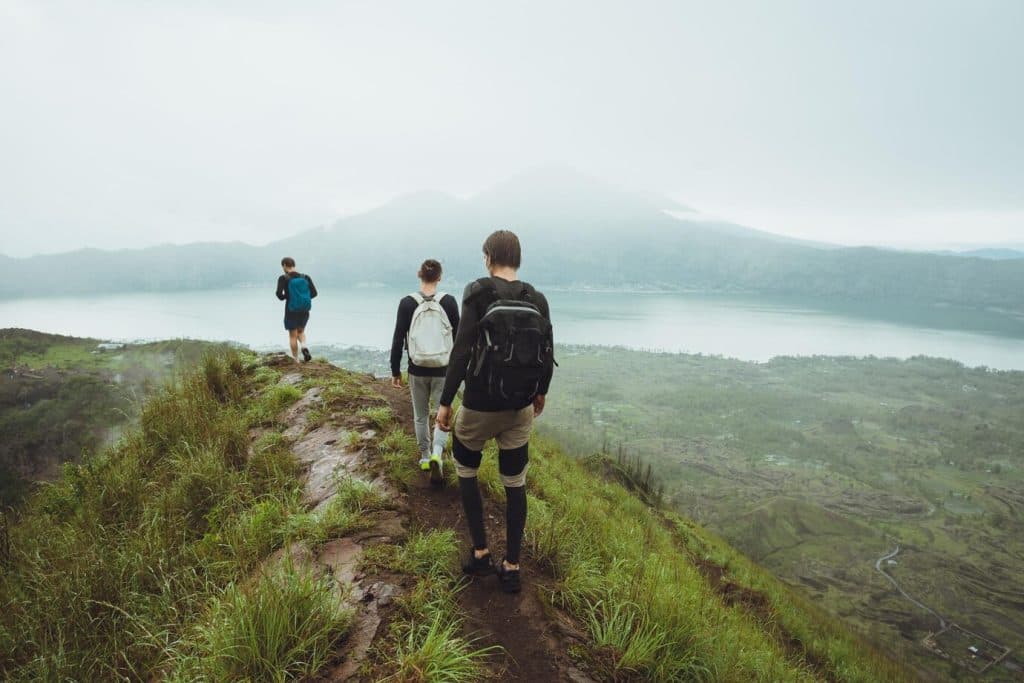
Like any activity, hiking requires some basic skills and equipment, which can feel overwhelming at first. If you're new to it, start with an easy to moderately difficult hike to get familiar with the essentials. Keep it to a single day, and consider going with a guide or a group to gain confidence and navigate new situations more easily. Here are the key things to keep in mind and the gear you'll need for your first hike:
Choose the Right Hiking Gear
Having the right hiking checklist makes a big difference in your experience, ensuring comfort, safety, and ease on the trail. Whether you're out for a few hours or a multi-day trek (though starting with a single-day hike is best), the right gear helps prevent discomfort, fatigue, and injury. It acts as your support system, letting you enjoy nature without unnecessary struggles. Here are some essentials to bring:
- Foldable trekking poles
- GPS (make sure to download offline maps on your phone)
- Portable charger (power bank) to keep your phone powered
- Durable, water-resistant hiking boots
- A comfortable backpack: suited to the hike length
- Flashlight or headlamp
- Dry wipes and antibacterial wipes
- Sunblock and sunglasses: for skin and eye protection
- Trash bag: to keep the trail clean
- Healthy snacks (avoid processed foods, opt for fruits, veggies, and homemade sandwiches
- Hiking first aid kit and necessary medications (e.g., antihistamines for allergies or eczema ointment)
- Small moisturizer: to prevent dry hands
- Lighter or matches: for an evening fire
- Light mat: for resting
How To Buy Safe Hiking Shoes
On a hike, your feet do most of the work, so wearing the right footwear is crucial for a comfortable and pain-free experience. Regular shoes aren’t designed for trekking and can lead to blisters or even injury. Proper hiking shoes provide stability, protect against rough terrain, and reduce strain on your feet and ankles. Here’s what to keep in mind:
- Trail shoes: best for light hikes on well-maintained trails.
- Moisture-wicking socks: choose the right length and fit to prevent blisters and discomfort.
- Hiking boots : opt for durable, waterproof shoes with strong ankle support.
*You can also read about The Best Acne Treatment.
How to Fit New Hiking Shoes
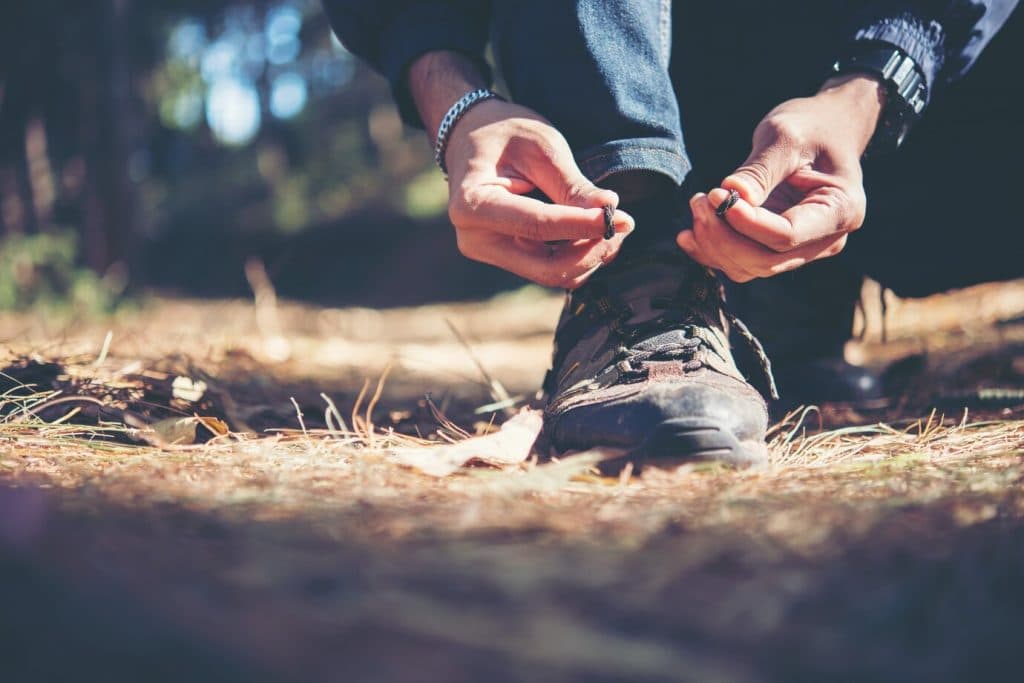
New hiking shoes can feel stiff and uncomfortable at first if they’re not properly broken in. To avoid pain on the trail, follow these steps:
- Wear your new shoes at home or on short walks before your hike.
- Test them on different terrains, including rough trails, to check comfort and flexibility.
- Gradually increase your walking time and distance to get used to them, using a treadmill at home can help.
- Wear the same socks you’ll use for hiking to ensure a natural fit, and avoid socks that are too short.
Appropriate Hiking Clothes
Do you prefer hiking in cold, hot, or moderate weather? Your comfort plays a huge role in how much you enjoy the experience! One of the hiking essentials is choosing the right hiking style that makes you look cool and comfortable at the same time. Here are some things to consider:
- Cold weather: avoid overly heavy layers that can feel restrictive. Wear thermal underwear, a thermal coat, and bring a rainproof jacket. Pack a spare sweater for the evenings, and keep your hands and feet warm with gloves, a hat, a scarf, and thermal socks.
- Hot weather: Choose light, breathable clothing, cotton or moisture-wicking fabrics work best. Avoid jeans and choose sportswear.
- Moderate weather: try not to wear overly warm clothing to prevent sweating and discomfort. Bring a spare sweater, hat, and gloves for cooler evening breaks. A sun hat is also great for protection.
*You can also read about The Causes of Tiredness.
Hiking Essentials for Backpacking
A well-packed backpack ensures you can carry your essentials comfortably without straining your back. The right size and features help distribute weight evenly, making your hike easier. Here’s what to keep in mind:
- For long hikes: a 20-30L backpack with adjustable straps offers comfort and enough space for essentials.
- For short hikes: a 40-60L backpack with padded straps and multiple compartments helps with organization.
- Waterproofing: in cold weather or when hiking through wadis, use a waterproof cover to protect your stuff. Alternatively, pack items in waterproof trekking bags.
- Packing properly: arrange your backpack to maintain balance, place heavier items close to your back and in the center to distribute weight evenly.
- Accessibility: keep frequently used items like your healthy snacks, maps, and first aid kits in easily accessible compartments.
Healthy Hiking Food
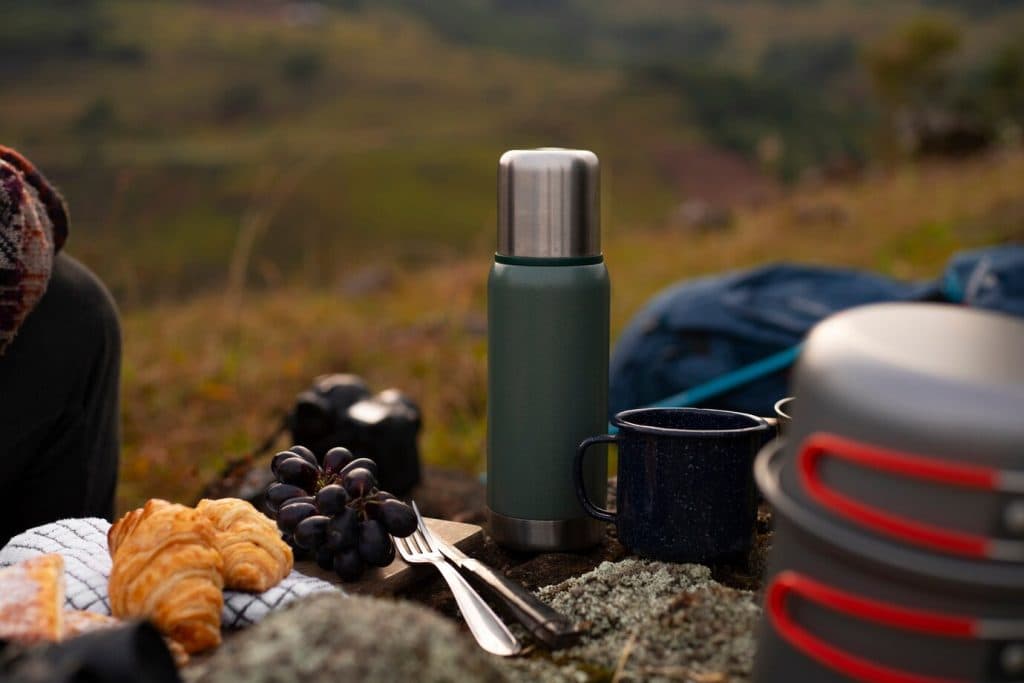
Eating right keeps your energy up, prevents dehydration, and helps you avoid fatigue during your hike. Preparing light, nutritious foods will keep you active, while staying hydrated prevents muscle cramps.
Avoid processed snacks like chips and sugary biscuits that can cause stomach discomfort. Instead, go for energy-rich foods like fruit, vegetable slices, nuts, and small, varied sandwiches.
Avoid heavy meals or foods that could spill, like soups or liquid-based dishes. If you want soup, prepare it during your break instead. Skip glass jars and opt for lightweight, unbreakable metal containers or secure food bags for easy carrying.
Stay Hydrated
Drinking plenty of water is crucial while hiking, especially in hot, changeable weather or at high altitudes and valleys. Dehydration can lead to dizziness, fatigue, and decreased physical endurance. Carry two to four liters of water, depending on the length of your hike.
Use a water bag or water bottles that are easy to access without having to stop frequently. Also, consider using a portable water filter or purification tablets in case of water shortages. You can fill your bottle or container with water from natural sources such as rivers and streams. Don't forget to drink small amounts regularly to avoid sudden dehydration.
Exercise Beforehand
Before planning your hike, ensure your fitness levels are adequate. If you smoke cigarettes, hookah, or e-cigarettes, make sure you have enough energy to endure the long walks for your own safety. Exercise for at least 20 minutes a day to prepare for the adventure, and start with an easy route if you're addicted to any of the above.
You should also check if your hike includes swimming or mountain climbing. In these cases, learning to swim and to climb is mandatory to avoid risks. Therefore, plan your trip in detail to understand the routes you will encounter in nature.
Warning Signs of Dehydration
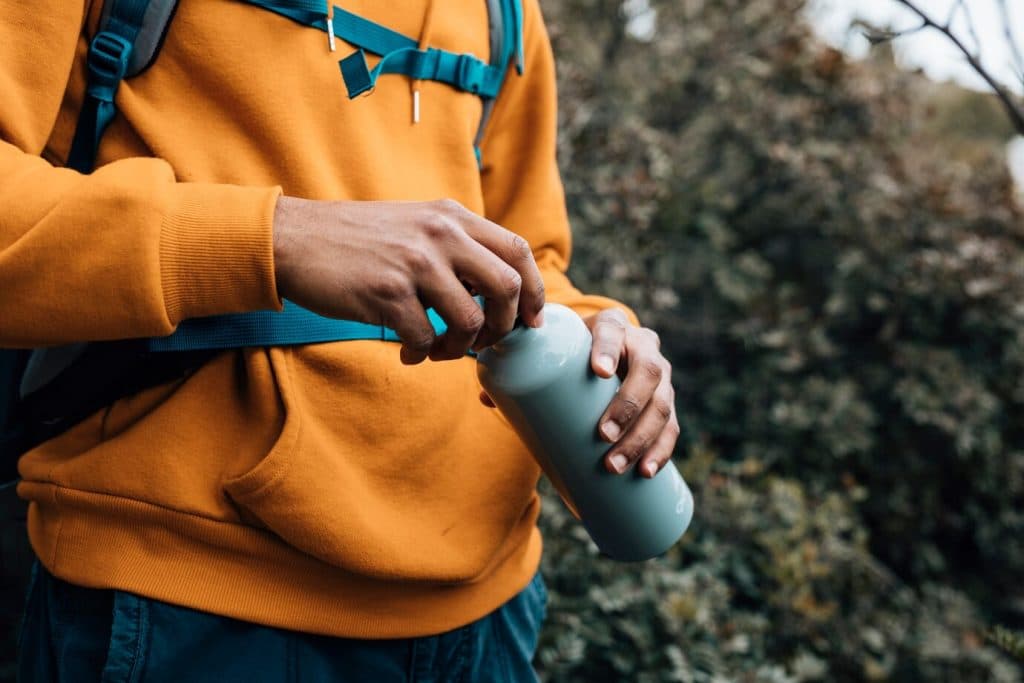
You should pay attention to your body's signs, as they can indicate a health problem that should be addressed before you suddenly feel tired. These signs include dry mouth, dizziness, and general weakness. A headache could indicate sun fatigue in hot weather or the risk of catching a cold in winter, especially if your ears feel very cold. Drink water and eat a salty snack immediately, and make sure to take a break for a light snack. Always inform your tour guide of any symptoms you experience before it's too late.
Stay Safe
Ensuring your safety on the trail should always be a priority. This requires proper planning and awareness of potential hazards so you can deal with them effectively. Taking safety precautions can prevent accidents and ensure an enjoyable hiking experience. Be aware of areas where wildlife lives or where dangerous snakes and biting insects lurk, such as desert areas, mountains, cliffs, and dense forests.
Do not approach animals or creatures you encounter for the first time, as they may be poisonous. Remember to store your food well in your backpack to prevent animals from approaching.
Respect Tribes and Indigenous People
First, research the safety of the area and the likelihood of encountering bandits. Hiking is often in areas inhabited by specific tribes, and it may not be safe to go alone or even in a group without prior planning and research to understand whether the area welcomes new visitors. Some tribes reject the presence of strangers, which can lead to fear and serious problems.
These tribes may speak languages that are difficult to understand, which can lead to complications in communication. However, there are many places that welcome visitors with open arms, even if their customs and languages differ. It's best to go with a group and a professional guide to such remote locations. Respect the local population by ensuring that the group guide knows the location in advance and has obtained the necessary local and legal permissions to visit these areas.
Hiking Essentials for Staying Safe
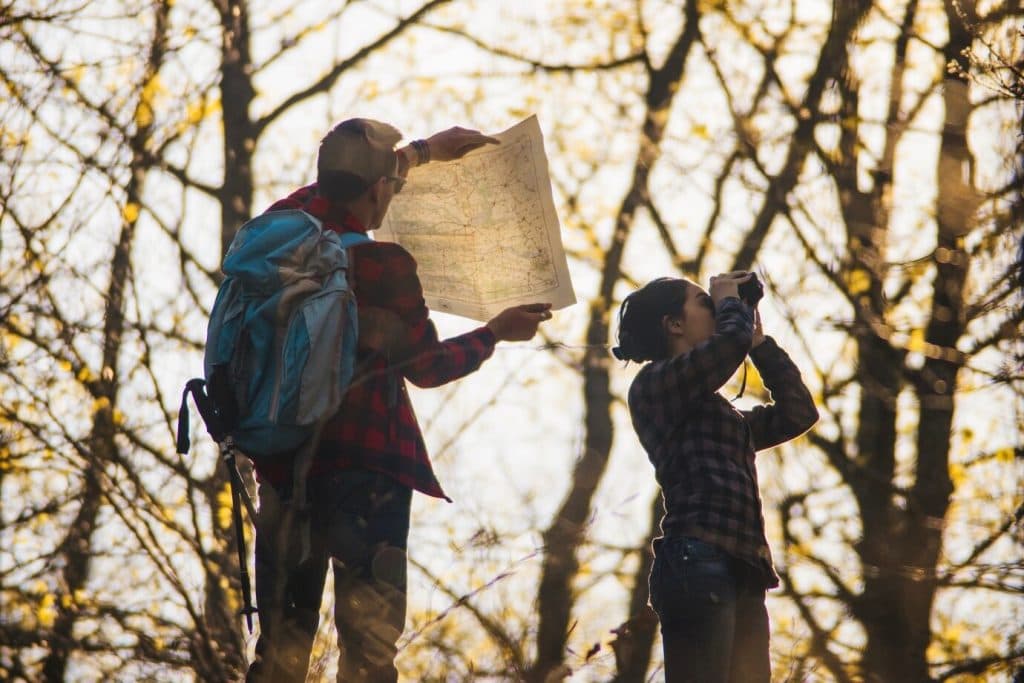
Accidents can happen, even with careful advance planning. Knowing how to respond in an emergency can make a significant difference in survival and recovery. Here are some important tips to keep you safe:
- Disinfect cuts and scrapes immediately.
- Cover blisters and avoid popping them.
- If you experience a sprain, wrap it tightly to reduce pain.
- Take breaks in the shade and keep your head moist on hot days.
- On cold days, eat energy-rich snacks like nuts and drink warm beverages like tea or herbal tea.
What to do if you get lost?
If you're hiking alone, make sure to carry a small power bank for your mobile device to stay safe and maintain communication. In areas without network coverage, preload offline maps to help you find the nearest populated area. Always inform your family or friends about your plans so they can track you if you're delayed. If night is approaching, find a safe spot to stay overnight.
Hiking is an enjoyable and fulfilling activity, but proper preparation ensures a safe and memorable experience. It's not recommended to hike alone in unfamiliar places. Stick to group hikes until you're experienced enough to venture out solo. With the right hiking items you choose, nutrition, and awareness of potential risks, you'll be ready to explore nature confidently. Start with easy to moderate trails, build your stamina, and always respect nature and the environment.
Hiking Benefits for Mental Health
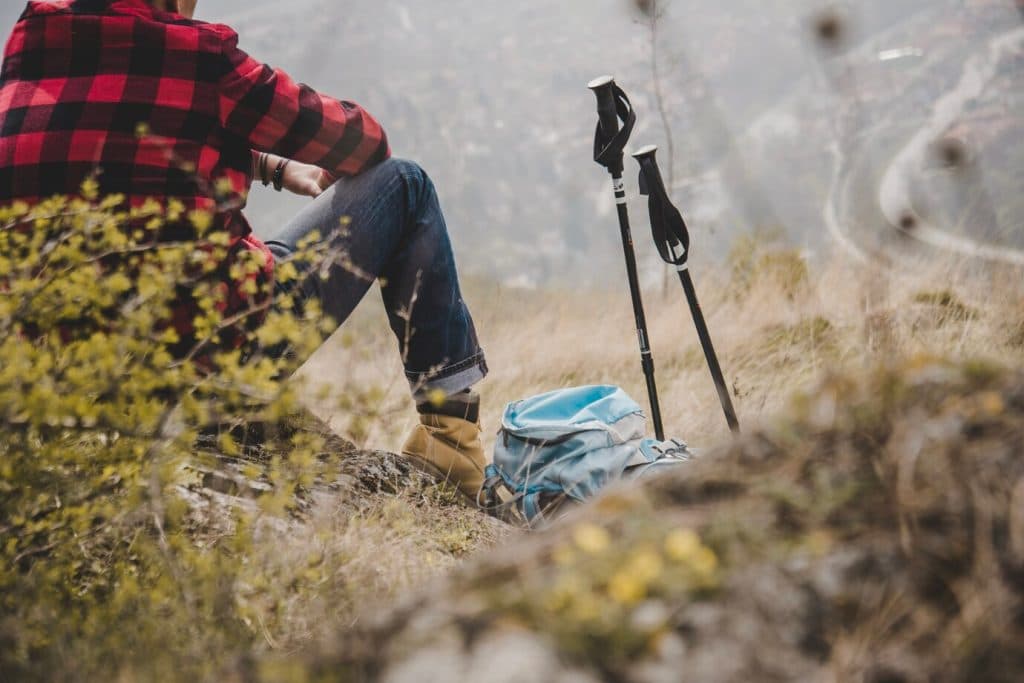
In today’s world, filled with digital distractions and the chaos of urban living, many people long to reconnect with nature through hiking or camping adventures. A hiking adventure can provide a much-needed break from daily stresses, helping to maintain both mental and psychological health. It’s become a powerful way to counter the pressures of modern life. Beyond its physical benefits, hiking acts as a powerful stimulant for mental well-being, helping reshape perspectives and foster a deeper connection with oneself and the world.
The positive effects of nature on mental health are not just folklore, they are backed by scientific research. Hiking in natural environments offers a variety of physical and psychological benefits, including:
Improved Mood and Serotonin Levels
Engaging in outdoor activities like hiking stimulates the release of endorphins, natural mood enhancers produced by the brain. Additionally, hiking in the sunlight promotes the production of vitamin D, which is essential for the synthesis of serotonin. This neurotransmitter is linked to feelings of happiness, well-being, and overall positive emotions.
Cognitive Function
One of the benefits of hiking is that it can improve cognitive functions. Research indicates that spending time in nature can boost cognitive function, making it easier to return to work or study. It also helps increase attention span, improve memory, and spark creativity.
According to Attention Restoration Theory, natural environments require less focused attention, allowing the brain to recover from daily stress, mental fatigue, and enhance concentration. Hiking, in particular, provides a mental break, reducing the risk of chronic conditions like high blood pressure caused by constant overthinking.
Enhance Gratitude
Being in nature, especially while hiking, heightens your senses. The beauty of the landscape, the sounds around you, and the physical activity all contribute to a deeper sense of gratitude, helping you appreciate both your environment and your body.
Relieve Stress and Regulate Cortisol Levels
Spending time in nature has been shown to lower cortisol levels, the body's primary stress hormone. Hiking and walking, with their stunning natural sights, sounds, and smells, act as a natural stress buffer, allowing the nervous system to reset and strengthening mental and emotional clarity. The tranquility of the surrounding environment further enhances this effect, fostering a deep sense of calm and relaxation.
Reducing Symptoms of Anxiety and Depression
As we mentioned hiking essentials to have the perfect trip, it’s important to know the benefits of hiking and how it can balance the physical movement. Being in nature, while focusing fully on the present moment, makes walking an effective way to overcome anxiety and depression. The sense of accomplishment that comes with completing a walk, along with the connection to the environment, can ease feelings of despair and isolation.
Developing Self-Awareness
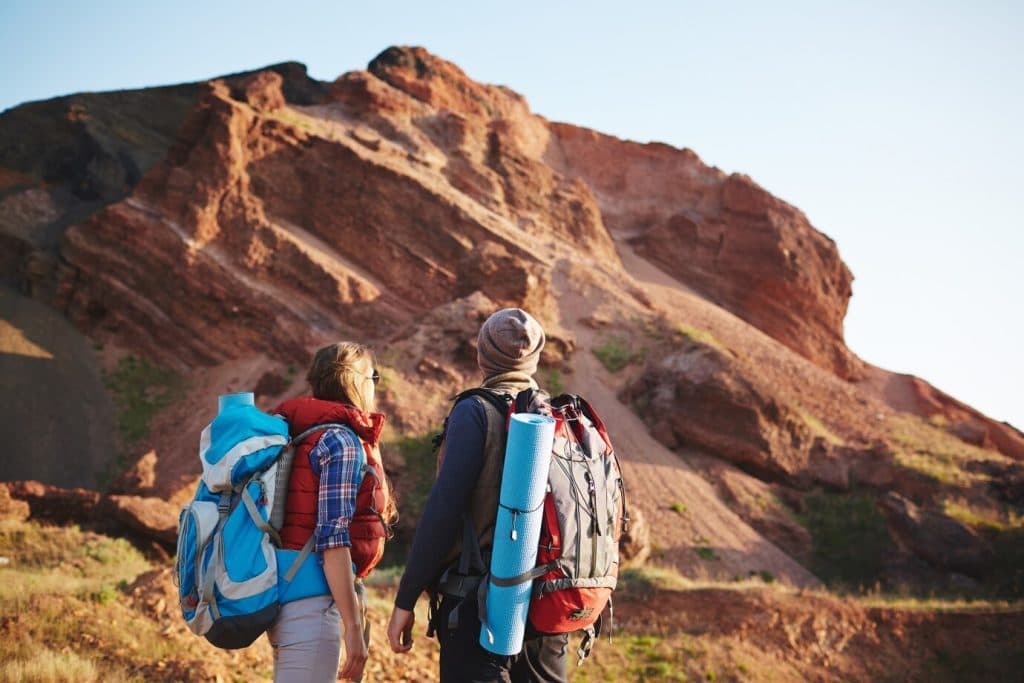
The solitude and calm of hiking in nature create an ideal space for reflection and contemplation. The steady pace and absence of distractions allow for a deeper exploration of thoughts and emotions. This inner journey can increase self-awareness, clarity, and personal growth. Hiking with close friends provides an opportunity to discuss shared challenges and exchange solutions in breathtaking-natural places.
Hiking Benefits for Sleep Quality
Regular exercise, such as hiking, can improve sleep patterns. The combination of physical activity and exposure to daylight helps regulate the body's internal clock, leading to deeper, more restorative sleep.
Enhancing a Sense of Connection to Nature
Hiking in nature fosters a sense of connection to the world, leading to a greater appreciation for the environment and a stronger desire to protect it. It provides a direct experience of the interconnectedness of all living things, cultivating a sense of belonging and responsibility.
Adopting New Ways of Thinking
Beyond the immediate psychological benefits, hiking can profoundly shift a person's perspective on life. Traversing trails, experiencing varied natural landscapes, and overcoming physical challenges can lead to a deep sense of personal growth and transformation.
Encourage a Sense of Adventure and Exploration
Hiking in nature can spark a sense of risk and adventure, encouraging people to step outside their comfort zones and embrace new experiences. This spirit of exploration often extends to other areas of life, which gives the willingness to embrace change and seek out new opportunities.
Daily Tips for Incorporating Hiking into Your Life
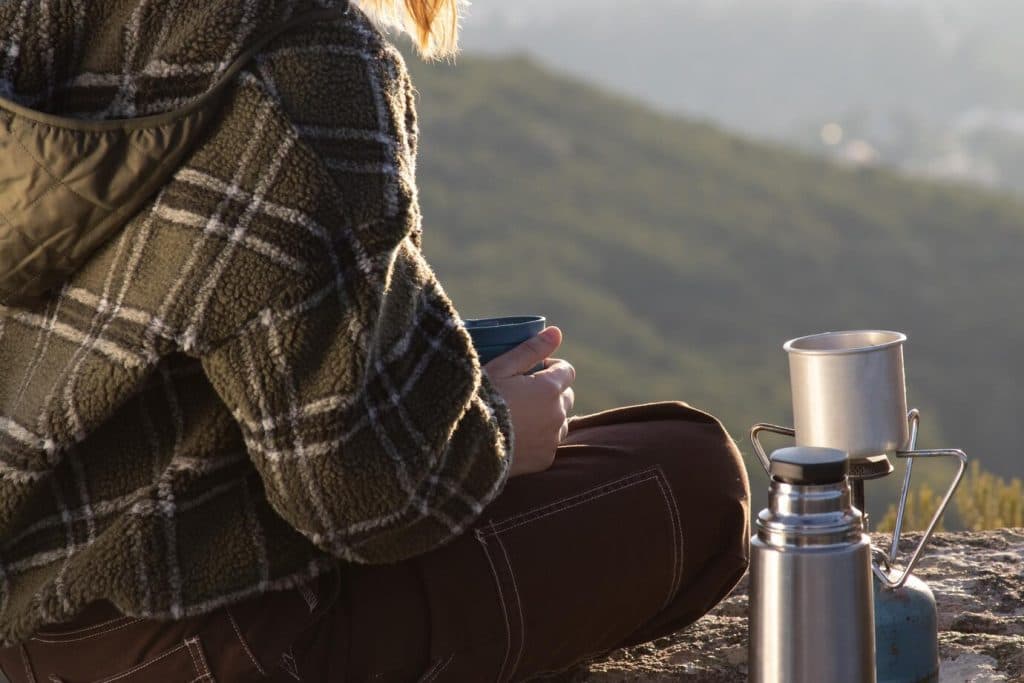
Before you embark on your first hike, start with daily walks to gradually build your physical stamina. Incorporating exercises like yoga or stretching can strengthen your body and help prevent muscle strain. Here are a few more tips to keep in mind:
- Start small: begin with short, easy hikes and gradually increase the difficulty as your fitness improves.
- Find a hiking buddy: walking with a friend or a group can help with motivation, enhance safety, and offer mental health benefits.
- Leave no trace: always respect nature by avoiding litter and minimizing your impact on the environment.
- Join a local group: many cities have hiking groups that provide guidance and support.
- Choose trails suited to your fitness: research trails in advance to find ones that match your current abilities.
- Pack essentials: don’t forget to bring water hiking essentials like snacks, sunblock, a hat, and a first aid kit.
- Stay aware: be mindful of your surroundings, weather conditions, and potential wildlife.
- Enjoy the scenery: take breaks to appreciate the beauty around you and immerse yourself in the calm of nature.
Ready-Made Hiking Meals
Looking for healthy and convenient hiking food? The Calo app provides a range of delicious, filling meals, including a box designed specifically for hiking. You can also choose from healthy snacks that help prevent stomach ache during long hikes. With a subscription, you can have daily meals delivered to your home or office. Plus, customer service is available to assist in selecting the perfect meals for your trip. If you're planning a family hike, the app also offers nutritious meals for children, all prepared according to global health standards by expert nutritionists.
FAQ
What is hiking and what is its explanation?
Hiking meaning differs based on the trip you’re planning. It includes lengthy walks through natural environments like mountains, forests, and valleys. It's typically done to enjoy beautiful scenery, explore the wilderness, and enhance physical fitness. Hiking can take place on paved trails or challenging terrains and ranges from short, one-day hikes to longer trips that include camping.
What are the basics you need to learn to master hiking?
- Take first aid basics
- Learn how to pack to avoid back pain
- Learn to swim
- Exercise regularly
- Take climbing lessons (if you want to to be advanced)
- Choose the best hiking outfit
Is hiking difficult for beginners?
Hiking for beginners may seem intimidating, but it's actually not that difficult if you start small. You don't need any specific hiking experience; you just need to be able to walk and know the terrain. It's an excellent way to immerse yourself in nature, get some good exercise, rejuvenate, and gradually become a pro.
What are the most dangerous hiking trails?
Mountain and water trails, particularly canyon trails, can be the most hazardous, as well as those with risks from predators or snakes. It’s important to familiarize yourself with the route and learn to swim if required. For mountain trails, ensure you're physically prepared and consider taking climbing courses before attempting a similar journey.
Knowing hiking essentials will protect you from getting injured and keep you safe. By walking this upward path, individuals can deepen their connection with themselves, nature, and the endless possibilities for personal growth. In a world filled with stress, hiking provides a chance for relaxation, resilience, and a renewed appreciation for life's simple beauty. You can read about the benefits of cardio or the benefits Pilates. Read more health and fitness topics on Calo blog.








